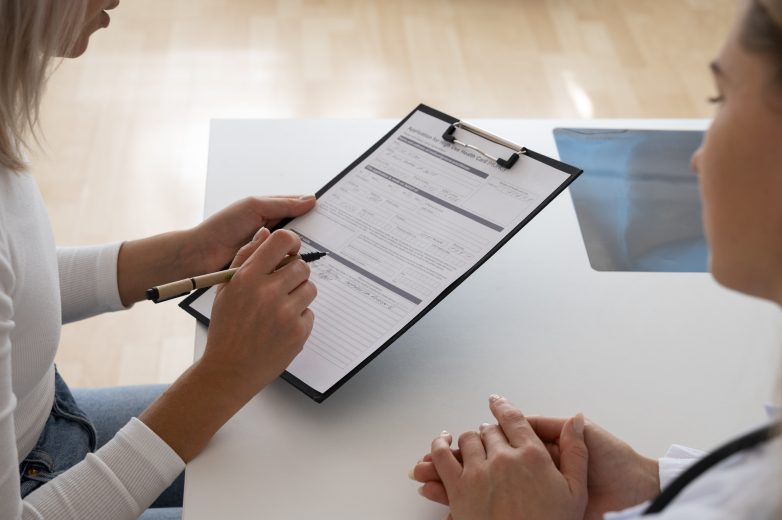Is IVF Painful? Understanding the IVF Process, Stage by Stage

Embarking on in vitro fertilization (IVF) can bring hope for many individuals facing infertility. At the same time, a common question often arises: Is IVF painful? While each person’s experience differs, having a clear overview of each stage of IVF—from ovulation induction to embryo transfer—can help set realistic expectations about discomfort. Below is a step-by-step look at the IVF process, focusing on which parts may cause minor to moderate discomfort and how to manage it.
IVF Process Overview: From Menstrual Cycle to Pregnancy Test
1. Day 1 of Your Menstrual Cycle
The treatment cycle for IVF frequently starts on the first day of your menstrual cycle. Your IVF doctor will confirm which day counts as Day 1, since women may have slightly variable cycles.
-
Possible Discomfort: Most individuals do not find this part of the IVF journey painful. However, the anticipation of what lies ahead may lead to stress or mild anxiety.
2. Ovarian Stimulation
Often considered a pivotal phase of treatment, ovarian stimulation involves using fertility drugs—specifically follicle-stimulating hormone (FSH) and luteinizing hormone (LH)—to stimulate the ovaries to produce multiple eggs instead of the single egg typically released in a natural cycle.
-
IVF Injections: These medications are usually administered as subcutaneous injections (just under the skin). While needles used for IVF are fine, some women may experience a brief sting, slight bruising, or bloating and other unpleasant side effects.
-
Discomfort Level: For many, this step is not severely painful. However, if you’re needle-averse, it may cause anxiety or mild discomfort.
-
Blood Tests and Ultrasounds: During the stimulation process, blood tests monitor hormone levels, and transvaginal ultrasounds track follicle growth. These procedures are generally well-tolerated but can be mildly uncomfortable due to the internal scan.
When follicles appear ready, a trigger shot (often containing human chorionic gonadotropin, or hCG) is administered, usually 36 hours before egg retrieval. This final injection helps mature eggs reach the last stage of development.
3. Egg Retrieval
Egg retrieval, also known as egg collection, is often described as a “difficult part of the cycle” because it’s an actual procedure. However, most patients receive mild sedation or general anesthesia, making it virtually painless during the operation.
-
Procedure That Is Performed: A specialized needle is guided through the vaginal wall and into each ovary. The follicles are gently aspirated to collect fluid containing the mature eggs.
-
Recovery: Women experience some cramping afterward, similar to menstrual cramps. The discomfort typically subsides within a day or two.
-
Possible Side Effects: Bloating and a feeling of fullness can occur due to fluid in the abdomen. Over-the-counter pain relievers (with your doctor’s approval) can help if the pain becomes bothersome.
4. Sperm Preparation
If fresh sperm is being used, a sample is provided on the morning of egg retrieval. Frozen or donor sperm samples are thawed in advance. The lab team evaluates sperm for motility and morphology, selecting the healthiest ones for fertilization.
-
Discomfort Level: None for the female partner in most cases. For the individual providing the sperm, the process is typically private and not painful, although it can be stressful.
5. Fertilisation in the Lab
After eggs and sperm are collected, fertilization takes place in a controlled setting. There are two principal methods:
-
Standard IVF Insemination: Egg and sperm are placed together in a dish and left to fertilise naturally.
-
ICSI (Intracytoplasmic Sperm Injection): A single sperm is injected directly into each egg, which can be especially helpful for male-factor infertility.
Within about 17 hours, lab professionals look for pronuclei—an indicator that fertilization has occurred. This step is completely outside your body, so there is no physical pain for you.
6. Embryo Development
Fertilised eggs evolve into embryos under precise laboratory conditions. Embryo growth is monitored daily:
-
Day 2: Embryos often contain 2–4 cells.
-
Day 3: Typically 6–8 cells.
-
Days 5–6: Some embryos become blastocysts, which can be selected for transfer or frozen embryo storage.
-
Discomfort Level: Since development happens in a lab, women do not feel anything physically during this phase. Any lingering discomfort is usually from egg retrieval recovery or ovarian stimulation.
7. Embryo Transfer
During embryo transfer, one or more embryos are placed directly into the uterus with a thin catheter. This procedure that is performed often feels like a routine Pap smear: mild pressure but generally not painful.
-
Possible Discomfort: Some experience minor cramping or a sensation of fullness, but it is considered painless to some and only mildly uncomfortable to others. No anesthesia is typically needed, although a light sedative is sometimes offered.
-
Uterine Lining: The endometrium’s thickness and quality play a major role in embryo implantation. Ensuring a healthy uterine environment may improve the chance of success.
8. Pregnancy Test (10–14 Day Waiting Period)
Roughly 10–14 days after the embryo is transferred, a blood test checks your human chorionic gonadotropin (hCG) levels to determine if you’re pregnant.
-
Waiting and Anxiety: This can be the difficult part emotionally rather than physically. Some women experience mild cramping or other early pregnancy-like symptoms, but these can also mimic premenstrual sensations.
Managing Discomfort and Side Effects
-
Medication & Pain Relief: Over-the-counter pain relievers such as paracetamol (with doctor’s approval) can help with cramping or mild pelvic soreness.
-
Lifestyle Adjustments: Staying hydrated, light exercise, and a healthy diet can reduce bloating.
-
Stress Management: Techniques like meditation, gentle yoga, or talking with a counselor may help alleviate anxiety.
-
Support System: Communicating with your partner, friends, or a support group can improve emotional well-being.
Moving Forward with IVF Treatment
Although IVF can be intimidating, understanding each step of the IVF process—and the parts of the process that may cause discomfort—helps you prepare mentally and physically. With the right treatment plan, supportive care, and realistic expectations, many individuals find that the potential discomfort is outweighed by the opportunity to build a family.
If you’re considering IVF or have questions about how painful IVF might be, don’t hesitate to consult a qualified IVF doctor or fertility specialist. They can discuss treatment options, the cost of IVF treatment, and any additional measures—such as frozen embryo transfers—that might reduce risks and enhance comfort. Each IVF journey is unique, and with the right guidance, women may find the experience manageable and ultimately rewarding.
Frequently Asked Questions
Which is more painful, IUI or IVF?
IVF typically causes more discomfort because of ovarian stimulation injections and the egg retrieval procedure. Sedation is usually given to manage pain, making it tolerable for most patients.
Which part of IVF is painful?
Egg retrieval can be the most uncomfortable phase, but it’s performed under mild sedation or anesthesia. Some also find the daily ovarian stimulation injections mildly uncomfortable.
Which is more painful, HSG or IVF?
An HSG (hysterosalpingogram) usually involves brief cramping, whereas IVF includes multiple steps and sedation for egg retrieval. Overall, IVF can cause more discomfort, but pain is generally well-managed with sedation and medication.
References
Ha’elyon, H., & Gross, C. (2011). The” lived pain” experience: The case of women undergoing IVF treatments. Indo-Pacific Journal of Phenomenology, 11(1), 1-10.
Buisman, E. T., Grens, H., Wang, R., Bhattacharya, S., Braat, D. D. M., Huppelschoten, A. G., & van der Steeg, J. W. (2022). Trends in research on pain relief during oocyte retrieval for IVF/ICSI: a systematic, methodological review. Human Reproduction Open, 2022(1), hoac006.
Gejervall, A. L., Stener-Victorin, E., Cerne, A., Borg, K., & Bergh, C. (2007). Pain aspects in oocyte aspiration for IVF. Reproductive biomedicine online, 14(2), 184-190.

